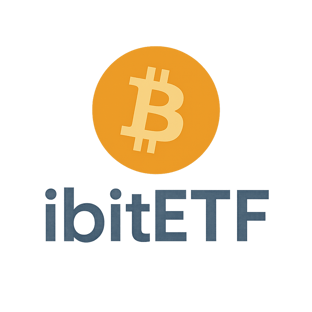The Shifting Landscape of Bitcoin ETFs: Analyzing Recent Trends and Market Sentiment
Analyzing Recent Trends and Market Sentiment of BTC In & Out Flows
6/28/20244 min read


Positive Turnaround in Spot Bitcoin ETFs
Earlier this week, the total inflows into spot Bitcoin ETFs witnessed a remarkable positive turnaround, a significant shift after experiencing substantial outflows in June. Several factors have contributed to this notable change, chief among them being the improving market conditions and a renewed sense of optimism among investors. The stabilization of Bitcoin prices has played a crucial role, helping to restore confidence among market participants who were previously wary of the cryptocurrency's volatility.
Investor sentiment has also seen a positive shift, driven by a series of encouraging economic indicators and regulatory developments. The U.S. Federal Reserve's recent decision to maintain interest rates has alleviated some concerns about inflation, making Bitcoin a more attractive option for investors seeking to diversify their portfolios. Additionally, regulatory clarity in certain jurisdictions has further bolstered confidence, with more institutional investors entering the market.
Specific data points highlight this positive trend. For instance, the total inflows into spot Bitcoin ETFs for the first week of October stood at $150 million, a stark contrast to the outflows observed in the previous months. This influx of capital underscores the growing interest and confidence in Bitcoin ETFs as a viable investment vehicle. Furthermore, the volume of Bitcoin traded on major exchanges has also seen an uptick, indicating increased market activity and liquidity.
Another contributing factor has been the strategic moves by major financial institutions. Several prominent asset managers have announced their plans to launch new Bitcoin ETFs, signaling a strong belief in the long-term potential of Bitcoin. These announcements have had a ripple effect, encouraging retail investors to follow suit and invest in existing Bitcoin ETFs.
Overall, the positive turnaround in spot Bitcoin ETFs is a multifaceted phenomenon, driven by improved market conditions, favorable economic indicators, and renewed investor confidence. As the landscape continues to evolve, it will be crucial to monitor these trends and their implications for the future of Bitcoin ETFs.
BlackRock Bitcoin ETF Struggles to Gain Momentum
The financial landscape for Bitcoin Exchange-Traded Funds (ETFs) has seen considerable evolution, yet BlackRock’s Bitcoin ETF (iBIT) appears to be struggling to find its footing. For the fifth consecutive trading day, the iBIT registered zero inflows, a stark contrast to the overall positive trend in spot Bitcoin ETFs. Several factors could be at play in explaining this lack of momentum.
Firstly, market competition is fierce. The Bitcoin ETF space is no longer a nascent market, and BlackRock faces stiff competition from established players who have already garnered investor trust. These incumbents have built substantial reputations and possess a loyal investor base, making it challenging for new entrants like BlackRock to capture market share.
Secondly, investor confidence plays a crucial role. Despite BlackRock's formidable reputation in the asset management industry, skepticism about its ability to navigate the volatile cryptocurrency market may be deterring potential investors. Cryptocurrency investment requires a nuanced understanding of market dynamics, and any perceived shortcomings in BlackRock's strategic approach could amplify investor hesitancy.
Moreover, potential strategic missteps by BlackRock could be influencing the ETF’s performance. Timing, marketing, and communication strategies are critical components in the financial markets. A misalignment in any of these areas could result in reduced investor interest. If BlackRock's entry into the Bitcoin ETF market was perceived as poorly timed or inadequately promoted, it could explain the tepid response.
Lastly, the waning excitement around Bitcoin ETFs might also be a contributing factor. The initial fervor that surrounded Bitcoin ETFs has somewhat diminished, as the market has matured and investors have become more discerning. This overall decline in enthusiasm could be disproportionately affecting newer entrants like BlackRock, who are attempting to make a late entry into a now-crowded space.
In this complex and competitive environment, BlackRock’s struggle to gain momentum with its Bitcoin ETF is indicative of broader market trends and challenges. Understanding these dynamics is essential for anticipating future movements and making informed investment decisions.
Comparative Performance: BlackRock vs. Grayscale’s GBTC
The introduction of spot Bitcoin ETFs has significantly altered the dynamics within the cryptocurrency investment landscape. On June 27, the cumulative net inflows into spot Bitcoin ETFs reached an impressive $11.7997 million. However, Grayscale’s GBTC has continued to experience substantial outflows, with $11.4 million exiting just yesterday. Since its inception, GBTC has seen total outflows amounting to approximately $18.5 billion. A comparative analysis of BlackRock's iBIT and Grayscale’s GBTC highlights critical differences in performance metrics, investor behavior, and market standing.
BlackRock's iBIT has managed to attract notable investor interest, as evidenced by the recent inflows. The inflow trend underscores a growing confidence in BlackRock's management capabilities and the overall structure of spot Bitcoin ETFs. Investors appear to favor the transparency and regulatory compliance associated with iBIT, which is aligned with BlackRock’s reputation for financial stewardship. This positive sentiment is reflected in the steady inflows and the ETF’s growing market capitalization.
Conversely, Grayscale’s GBTC has faced persistent outflows, which can be attributed to several factors. One notable concern is the discount at which GBTC shares have been trading relative to its net asset value (NAV). This discount has been a deterrent for investors seeking liquidity and fair value. Additionally, regulatory uncertainties and the anticipation of new, more efficient Bitcoin ETFs entering the market have further compounded GBTC’s challenges.
Investor behavior also plays a crucial role in this comparative performance. The inflows into BlackRock’s iBIT suggest a preference for investment vehicles that offer direct exposure to Bitcoin without the complexities associated with traditional trust structures like GBTC. The ongoing outflows from GBTC indicate a shift in investor sentiment, possibly driven by a desire for more straightforward and cost-effective investment options.
In summary, the comparative performance of BlackRock’s iBIT and Grayscale’s GBTC reflects broader trends in the Bitcoin ETF market. BlackRock’s iBIT has benefited from positive investor sentiment and robust inflows, while Grayscale’s GBTC continues to grapple with substantial outflows and market challenges. This evolving landscape underscores the importance of understanding the nuances of different Bitcoin investment vehicles and the factors that influence investor behavior.
Invest
info@ibitetf.com
